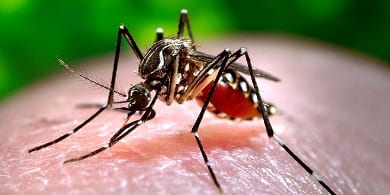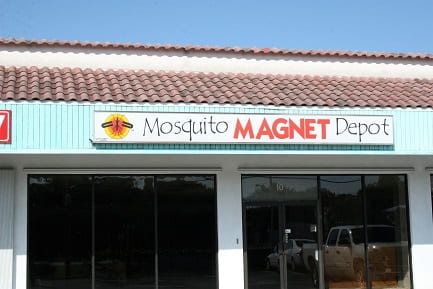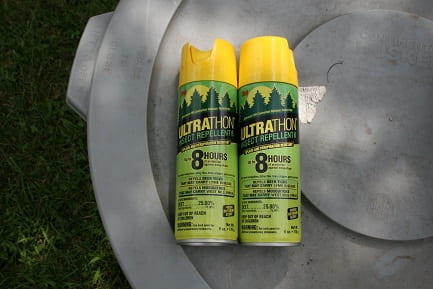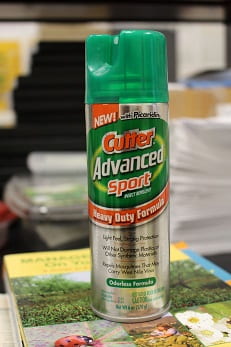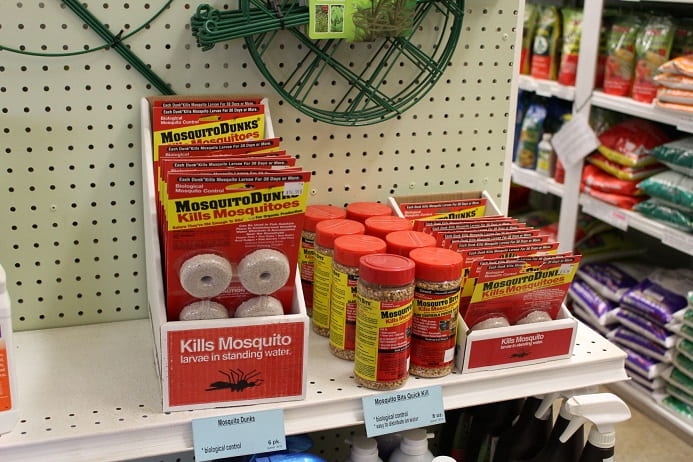–by Dr. Raymond Cloyd
The current wet weather and standing water has provided “perfect” conditions for mosquitoes (Figures 1 and 2). The three primary strategies that must be implemented to avoid mosquito problems and bites are: 1) source reduction, 2) personnel protection, and 3) insecticides.
Fig 1. Mosquito Sucking Blood (Author–Inverse
Fig 2. Mosquito Magnet Sign (Auth–Raymond Cloyd, KSU)
1) Source Reduction
It is important to routinely eliminate or reduce all mosquito breeding sites, which will effectively decrease mosquito populations, by removing stagnant or standing water from items or areas that may collect water. These include the following:
* Wheelbarrows
* Pet food or water dishes
* Saucers/dishes underneath flower pots
* Empty buckets
* Tires
* Toys
* Wading pools
* Birdbaths
* Ditches
* Equipment
* In addition, check gutters regularly to ensure they are draining properly and are not
collecting water
2) Personnel Protection
Protect yourself from mosquito bites by delaying or avoiding being outdoors during dawn or dusk when most mosquitoes are active. Use repellents that contain the following active ingredients: DEET (Figures 3 and 4) or picaridin (Figure 5). Generally, DEET provides up to 10 hours of protection whereas picaridin provides up to 8 hours of protection. A product with a higher percentage of active ingredient will result in longer residual activity or repellency. For children, do not use any more than 30% active ingredient. Furthermore, do not use any repellents on infants less than two months old. Clothing can be sprayed with DEET or permethrin (pyrethroid insecticide). However, be sure to wash clothing separately afterward. Before applying any repellent, always read the label carefully.
Fig 3. DEET Repellents (Auth–Raymond Cloyd, KSU)
Fig 4. DEET Repellent (Auth–Raymond Cloyd, KSU)
Fig 5. Repellent With Picaridin (Auth–Raymond Cloyd, KSU)
3) Insecticides
For stationary ponds, there are several products that may be used, such as; Mosquito Dunks and/or Mosquito Bits (Figure 6). Both contain the active ingredient, Bacillus thuringiensis subsp. israelensis, which is a bacterium ingested by mosquito larvae that results in death. The bacterium only kills mosquito larvae with no direct effects to fish or other vertebrates. Avoid making area-wide applications of contact insecticides because these are generally not effective, and may potentially kill many more beneficial insects and pollinators (e.g. bees) than mosquitoes.
Fig 6. Mosquito Dunks and Mosquito Bits (Auth–Raymond Cloyd, KSU)
What Does Not Work Against Mosquitoes
The following items will not control mosquitoes:
* Mosquito repellent plants (citronella plants)
* Bug zappers
* Electronic emitters
* Light traps/carbon dioxide traps.
If anyone has questions or comments regarding mosquito control please contact your county extension office or Department of Entomology at Kansas State University (Manhattan, KS).
